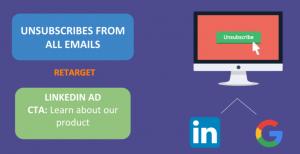You’ve spent months creating and compiling your product. It’s jam-packed full of all your juicy knowledge and advice, and you’re ready to put it out there into the world. You’re ready to let it loose on the public to cure all their woes.
But launch day comes and goes to the harmonious sound of crickets.
No one bought your product. Sure, a couple of your most devoted fans clicked through to the sales page, but not one single person clicked the buy button.
Ouch. Not what you were expecting, right? Maybe you were expecting the queues to be out the metaphorical door, people lining up to get their hands on your debut product. Or maybe you had a glimmer of an idea in your head about how many you’d sell, but you didn’t dare voice it to anyone in case they laughed at you.
But just because no one bought your product, it doesn’t mean you don’t have a great piece of collateral you can work at until people are queuing up around the online block to buy it.
Let’s take a look at some of the reasons why you might have struggled to make a sale.
1. You’ve got your audience all wrong
The very first thing every infoproduct creator should find out is whether there is a real-life need for their product. If your audience isn’t interested in what you’re selling they’re definitely not going to buy.
And, let’s face it, it’s so easy to think a product is great from the inside, but often this means we’re making assumptions.
And assumptions aren’t facts.
How to fix it
This is a tricky one to fix because if your product isn’t in demand or there isn’t a need for it, you’ve kind of got to start from scratch, or at least add elements that your audience does need.
Start by:
- Asking your audience
This is such a simple task, but it gets overlooked so often. If you have an email list or a following on social media, you already have people to ask. Send out a survey using a platform like SurveyMonkey to discover what the pain points of your audience really are – not what you think they are.
Nothing is more valuable than hearing first-hand from the horse’s mouth.
- Forums are good, too
If you have a small audience or are starting from scratch before you create your infoproduct, you still need to conduct some market research (probably more so than anyone starting with some semblance of readership).
Forums like Quora and Reddit are great for digging deep into the questions your audience might have, and therefore gleaning a better understanding of the problems they face and how you – and your infoproduct – can solve them.
For example, if you were creating a cookbook, you could head over to the Cooking for Beginners subreddit to learn more about what novice cooks are thinking about and the questions they’re asking.

Even from these four results, there is some valuable inspiration, like how to make pizza dough, how to make chicken curry, and the best way to make loco moco.
Finding out what your audience wants and, more importantly, needs is the number one key to making an infoproduct that sells.
2. You used limited marketing
When you put your product out there for all to see, did you have a strategy in place? Or did you simply post a few Tweets, send an email to your list, and hope for the best?
Marketing an infoproduct has to be a consistent and relentless process, but it also has to be strategic and well thought-out (lest you want to become a sleazy salesperson in the blink of an eye).
If your infoproduct is something that solves your audience’s needs (refer back to point one), then it’s highly likely it’s your marketing that’s holding you back.
How to fix it
First and foremost, you need to put together a plan that covers 2-4 weeks before the launch of your product (yes, you absolutely need to start marketing before you’ve launched it – or even finished creating it). This helps create a buzz around it and will have your audience chomping at the bit to buy.
Within this plan, you want to include emails to your list, blog posts that are relevant to the subject of your infoproduct, social media shoutouts, any ads you want to run, and any webinars you plan on holding.

Here’s what your plan might look like for the month (note that something is happening every single day).
It might feel like overkill, but remember you want to build excitement amongst your audience and it’s unlikely they’ll all be on all the platforms you’re marketing on.
- After the launch
Even when the launch of your infoproduct is over, you need to continue marketing if you want to carry on making sales.
You can do this by:
- Adding an autoresponder sequence for when new people sign up to your email list. These people might have missed your launch, so let them know about your product in a different way.
- Schedule regular social media content that points towards your sales page or blog posts that promote your infoproduct.
- Write guest posts to reach new audiences and keep the momentum of selling on the incline.
- Create blog posts and other forms of content that relate to your product and weave in a link to your sales page.
Consider buying psychology
Getting people to purchase something from an unknown source online is difficult. Let’s take a look at the four types of buyers and how you can ease their fears with your marketing.
The Worried Buyer: this buyer questions whether they’ll lose their money and whether it’s a good investment.
The Hesitant Buyer: this buyer waits until right at the last minute until they buy – often writing pros and cons lists until they miss the sale or the launch entirely.
The Pessimistic Buyer: this buyer takes the most convincing. They are slow to trust and quick to question why you are the person to be selling them this infoproduct.
The Carefree Buyer: this buyer doesn’t really care about what you’re offering them as they’re not sure it would even make a difference.
Your marketing strategy should be able to relieve the worries and fears of these four different personas, both during and after the launch.
3. You’re not putting your customers first
Without customers, you don’t have a business. These people are the ones who rally around you, who promote your product via word-of-mouth, and who keep the money rolling in.
Therefore, they are your number one priority.
Everything you do around your infoproduct, from the creation stages to the marketing, needs to focus on how it will help your customers – how they will benefit from buying it. Basically, you want to focus on how it will change their lives, not how good a product it is and what bells and whistles it has.
How to fix it
Before you do anything else, put your customers at the top of your list. Write it on a post-it and stick it to your wall if you have to, and ask yourself whether you’re serving your customers every time you do something surrounding your infoproduct.
- Have a clear message
People buy things they have a connection with; things that resonate with them. To create a connection between your audience and your infoproduct, your audience needs to know that it was created especially for them.
And to do this, you have to send out a clear message.
It can be tempting to tell your audience that your product will help them “be more organized, run 5km in 10 days, start cooking healthier meals, and boost their confidence”, but this convoluted message promises too much. It’s much more effective to focus on one thing that your infoproduct will tackle: “This product will show you how to create healthy meals every day on a budget.”
By focusing on one thing, you’re actually connecting with more people who matter. It’s like the old spreading your net too wide analogy.
- Create systems of support
But caring about your customers shouldn’t stop as soon as they click the buy button, it should continue and continue.
Check in with them regularly to find out how they’re getting on with the infoproduct, and offer them any support they might need to reach their goals and solve their pain points.
This ties in with customer service, too. Be there for your customers if they have questions and answer them openly and honestly.
Building trust and a loyal following is the key to building a successful infoproduct business, so take your time nurturing the people who matter and making sure everything you do and create is done so with their best interests in mind.
It’s one thing to create an infoproduct and another entirely to create an infoproduct that sells. There’s an art to it. We’ve covered why your infoproduct might not be selling here, but to avoid that in the first place, you want to start off on the right foot.
Business & Finance Articles on Business 2 Community(78)








